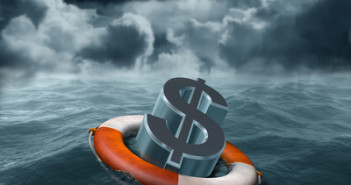- The escalation of the trade wars does not result in all the expected reactions.
- Commodities and their currencies are sensitive as one would expect.
- Safe-haven currencies are far from providing the expected reactions.
The US is moving forward and readying new tariffs on China, this time worth a whopping $200 billion of Chinese goods. There is no letting down in trade wars. However, stocks markets are far from panicking. After every dip, comes a “buy the dip” and there is no clear direction down.
However, other assets are reacting in expected ways, and others are not.
Tariffs and the potential of non-tariff barriers from China on trade are set to hurt not only trade but also global growth. Assets associated with growth and risk are suffering on bad news and bouncing on good news. The general picture is quite gloomy, reflecting the damage already done via postponed investment opportunities and the potential for a much worse downturn.
Heavy metals, and oil too
Copper is on the back foot, and its forecast has also been downgraded by Goldman Sachs, which says things will get worse before they get better. The widely used industrial metal is sometimes dubbed “Dr. Copper” for its ability to predict future moves in the global economy. While the correlation between copper and the capability of economies to grow has been controversial, the fall in its prices certainly makes sense.
The initial victims of Trump’s tariffs were other broadly used metals: steel and aluminum. These may be more expensive for American farmers buying rebar from American suppliers shielded by the duties, but they become less valuable on the global level.
Also oil is slipping. The price of the most essential commodity is on the back foot despite concerns about supply and a drawdown in inventories. The slide can be easily linked to trade fears. Slower global growth means slower growth in demand for the black gold.
Commodity currencies
Commodity currencies are following the news on trade quite closely. The Canadian economy is the No. 1 victim. Canada is dependent on the US for the vast majority of its exports and also exports oil. The Bank of Canada was content on the current state of the economy but mentioned trade no fewer than six times in its short rate statement. They seem terrified by trade.
The Australian Dollar is not far behind. The land down under has vast resources of iron ore and other metals that it exports to China among others. The danger to the world’s second-largest economy takes its toll on the Australian Dollar. China is Australia’s No. 1 Trade Partner. New Zealand, Australia’s neighbor and an exporter of dairy products, is also feeling the heat with a downfall in its currency.
Unsafe safe-havens
When the world is in trouble, commodity currencies fall, and safe-haven currencies rise. The Japanese Yen is the world’s No. 1 safe-haven, and the Swiss franc is an Alpine asset sought when push comes to shove.
Nevertheless, both risk currencies are not enjoying demand, and both are surrendering to the might of the US Dollar. In the Yen’s case, it is especially surprising given the additional developments around North Korea. The peace process hit a bump: US Secretary of State Mike Pompeo visited Pyongyang and came out empty-handed. Nevertheless, the USD/JPY hit a 6-month high.
What is going on? The US Dollar has additional reasons to rise apart from being safer than commodity currencies. The US economy is in great shape, easily outperforming its peers in other countries. The labor market is close to full employment, and even inflation picked up, with the Fed’s favorite measure reaching the Fed’s goal. The Core PCE finally reached 2% YoY in May.
The US was the champion of free trade, promoting the value among friends and foes alike. Trump upended this approach with his America First vision.
The 180º turn is a paradigm shift that breaks correlations. It seems like the greenback is emerging as the ultimate safe-haven. As the largest economy grows fast, it makes sense going to Fortress America.
Can this last? Tariffs will eventually hurt the US economy. While the US is less dependent on other countries for exports, its consumers are used to buying cheap products made abroad. Tariffs put an end to that and erode Americans’ purchasing power.
However, in the meantime we are seeing King Dollar reign supreme, beating risky and safe currencies alike.
More: Trade War from the Trenches: Battle moves to Europe, three things to watch
Get the 5 most predictable currency pairs
